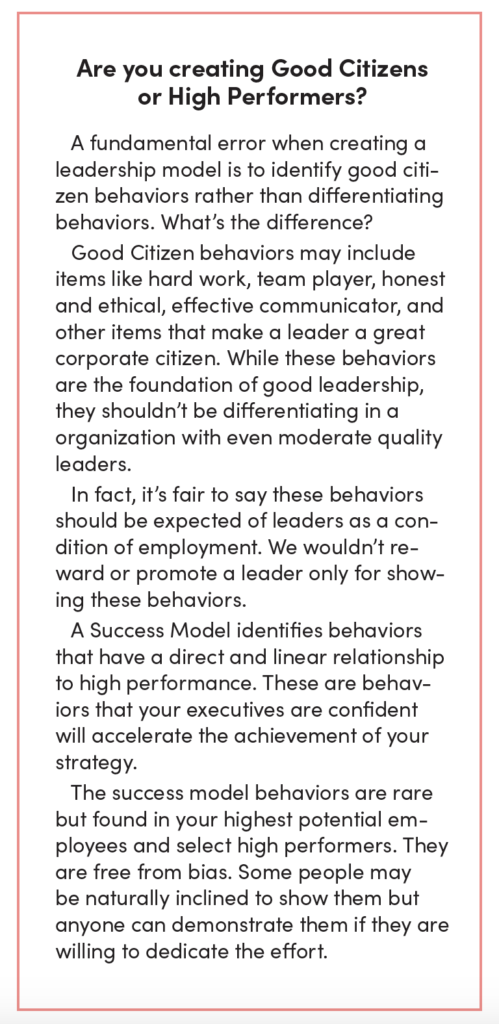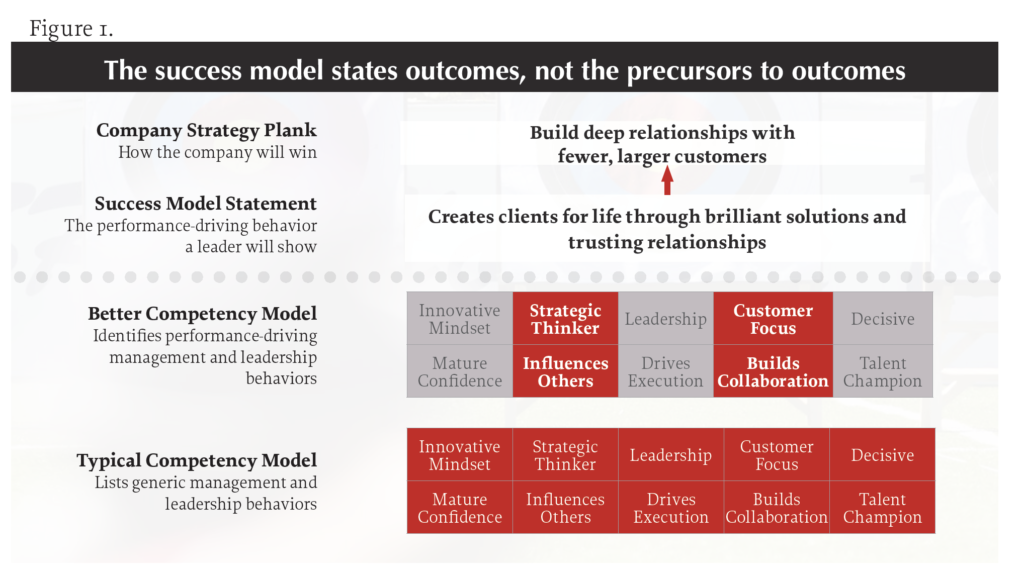Please enter your email in order to download this publication.
By Marc Effron, President, Talent Strategy Group
Few human resource tools promise as much and deliver as little as the typical leadership competency model. These models exist in a world of contradictions – simultaneously being specific but generic, ambitious but uninspiring, academically perfect but practically flawed.
Popularized in the 1990s by consultants, academics and a flood of new leadership books, leadership competencies were advanced as the remedy for every organizational illness. They would drive objectivity into selection processes. They would allow organizations to balance the “what” and the “how.” They would make development paths clear.
But what started as a well-intended effort quickly evolved into a complex, unusable example of how HR “just doesn’t get it.” Managers rejected the typical 10 competency, 5-level, 50-behavior frameworks whose content they didn’t recognize as what truly differentiated their best talent.
Those managers simply wanted to know what they and their team member needed to do to thrive at their company.
What went wrong?
The early excitement around competencies ignored significant weaknesses in the concept, including that there was no clear definition of “competency.” Some consulting firms defined them to include factors that were largely driven by personality and therefore very difficult to change (e.g. self-confidence). Others chose to include attitudes, beliefs, motives and similarly hard to define attributes.
The definition of a competency entirely depended on who was designing the model. More importantly, in the ensuing rush to create competency models, designers often forgot to ask themselves two critical questions:
- What is the fundamental business purpose of competencies and competency models, and;
- Is a competency model the easiest way to achieve that purpose?
As a result, today’s typical leadership competency model is often an all-encompassing, multi-layered behemoth whose complexity far outweighs its value. And, even with its verbosity and heft, it still doesn’t tell managers exactly how to succeed.
As a result, most leadership competency models are “nodded at” but never truly embraced by executives.
A better way: Create a Success Model
There is another way – a simpler way – to crisply, compellingly and accurately define success for managers. A Success Model is a way to describe the outcomes that differentiate successful leaders using only a few, short, powerful phrases.
A Success Model is more effective than a leadership competency model because it focuses on outcomes, not on the behaviors that precede them. It’s easy to implement because managers instantly understand its brief, engaging and aspirational statements.
Three things differentiate a Success Model from the typical leadership competency model:

1. A Success Model includes only the “differentiating few”: The Success Model uses four to five statements to describe what will differentiate tomorrow’s stars. Each statement succinctly expresses one concept. It’s a holistic statement of the expected results, not a string of competencies tied together with conjunctions.
A focus on the differentiating few is beneficial for two reasons. First, it reinforces the reality that there is a hierarchy of organizational priorities. A manager can engage in many important activities during her day. Yet a small number of those activities will have a disproportionately large impact on her, and the organization’s, success.
We owe it to busy managers to help them differentiate the critical from the merely important. (See: Are you Creating Good Citizens or High Performers?)
Second, identifying the differentiating few acknowledges the science that shows that people more accurately remember information when it’s presented in “chunks” of three or four. A manager will recall four success model statements far more easily than 10 leadership competencies.1
This tight focus makes the Success Model easy to explain and simple to use to assess performance and potential.
2. A Success Model Focuses on Outcomes: Managers want clarity about the outcomes for which they’re responsible. A Success Model describes the outcomes that define high performance, not the underlying behaviors that a competency model does.
For example, consider four leadership competency model staples: Strategic Thinker, Influences Others, Building Collaboration and Customer Focus. In the abstract, one could easily support the merits of each of these.
But a competency has no value on its own. It only has value when it’s applied to achieve a specific outcome. A leader could use those four competencies to deliver any number of different results. How is a leader expected to know exactly which outcomes her company desires?
As shown in Figure 1, a Success Model statement describes the outcome that the company values, e.g. “Creates clients for life through brilliant solutions and trusting relationships.” This statement is directly and tangibly linked to the company’s strategy, unlike a competency.
For leaders, that statement succinctly explains what they must deliver to “win” in their organization. It is purposefully agnostic about how those results are achieved, recognizing that there are many paths that might lead to the same result.

3. A Success Model sounds like your company: Your executives may say that winning at their company means that leaders “Grow teams that deliver legendary projects” or “Create clients for life through trusting relationships.” They don’t speak in competencies and you shouldn’t either.
Using natural phrasing makes the success model easier to understand and more emotionally engaging for leaders.
Creating a Success Model
A success model is developed using a process that’s similar to designing a leadership competency model. Your executives are interviewed and themes emerge. The crucial difference is in how the interview is managed to identify the few differentiating behaviors and how the executives’ words and phrases are captured.
Implementing a Success Model
The power of a Success Model comes from making it the new “true north” in your organization. It should be integrated into every people process in the company.
Candidates should be interviewed using the Success Model as a framework. On-boarding should bring the model to life with live examples from leaders about how they apply it. The model can be a screen for potential to advance. Your leadership education should focus on building those capabilities in as many leaders as possible, as quickly as possible.

Aligning a Success Model to a Competency Model
All of your hard work building detailed leadership competencies doesn’t have to go to waste. While we don’t advocate for sharing leadership competency models, this doesn’t mean that they aren’t a reasonable “back-pocket” tool.
Ideally a success model statement is written in a way that leaders at all levels can easily understand how to apply it to their role. There will still be some leaders who want to understand which leadership competencies are required by or built by each success model statement. For that reason, mapping from the success model to the leadership competencies associated with it can be a helpful exercise, available to leaders as needed.
A Better Way
HR’s goal should be to build as many high performing leaders as we can, as quickly as we can. Competency models helped to advance us beyond using subjective and biased standards to select and grow leaders.
We must now help our leaders to understand the vital few results that differentiate the best. They aren’t concerned with how artfully or elegantly we present the model. They simply want to know what’s required to win.
- Marc Effron, President, Talent Strategy Group
- Marc founded and leads The Talent Strategy Group and consults globally to the world’s largest and most successful corporations. He co-founded the Talent Management Institute and created and publishes TalentQ magazine. He co-authored the Harvard Business Review Publishing best-seller One Page Talent Management and 8 Steps to High Performance.


